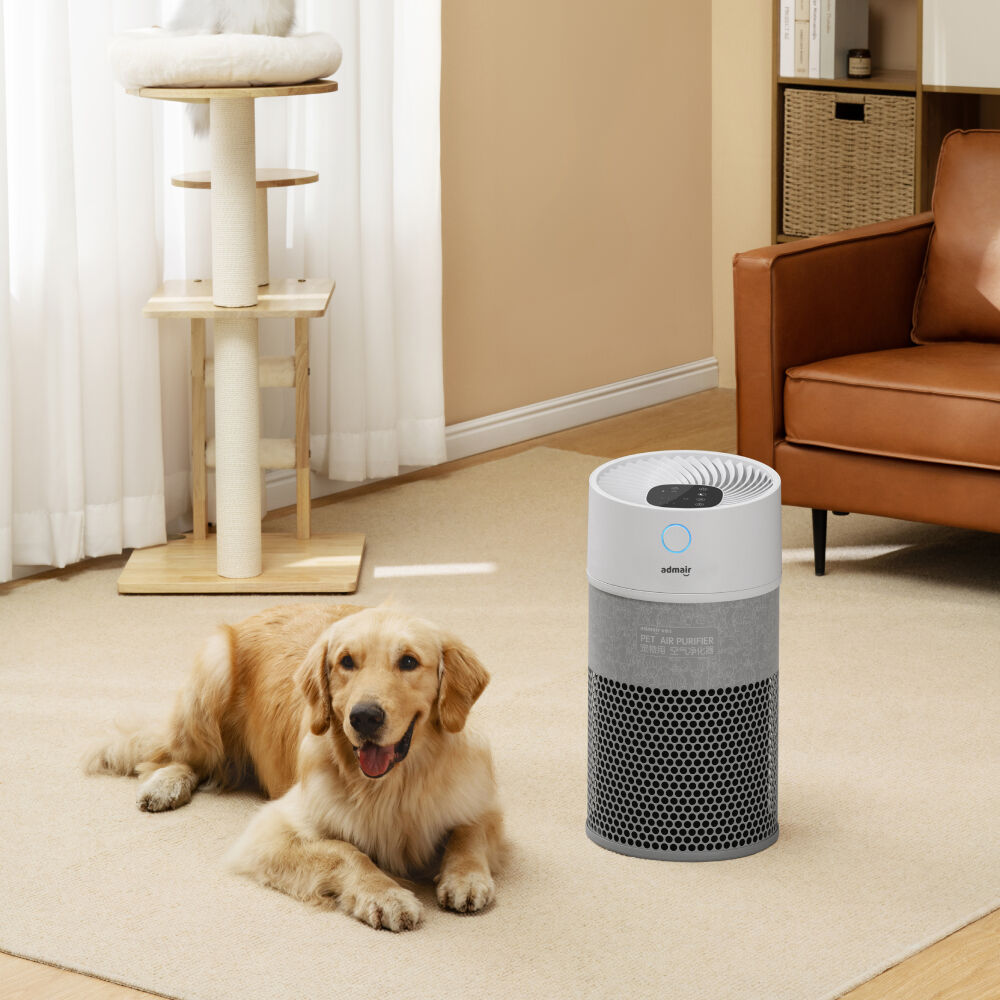Can a Pet Air Purifier Truly Reduce Allergies and Odors?
Understanding the Impact of Pet Air Purifiers on Indoor Air Quality
Living with pets brings immense joy and companionship, but it also introduces unique challenges to our indoor air quality. Pet dander, fur, and associated odors can significantly affect the air we breathe, particularly for those with allergies or respiratory sensitivities. A pet air purifier has emerged as a promising solution to these common household concerns, offering specialized filtration designed to tackle pet-specific air quality issues.
Recent studies have shown that indoor air can be up to five times more polluted than outdoor air, and pets contribute significantly to this issue. As more households welcome furry friends into their homes, the demand for effective air purification solutions has grown exponentially. Let's explore how pet air purifiers work and their effectiveness in creating a healthier living environment for both pets and their owners.
The Science Behind Pet Air Purification Technology
Advanced Filtration Systems
Modern pet air purifiers utilize sophisticated multi-stage filtration systems specifically engineered to capture pet-related pollutants. The primary component is typically a True HEPA filter, capable of trapping particles as small as 0.3 microns, including pet dander, hair, and microscopic skin cells. This level of filtration is crucial because pet allergens are particularly small and can remain airborne for extended periods.
These devices also incorporate activated carbon filters, which are essential for addressing pet odors. The porous structure of activated carbon effectively absorbs volatile organic compounds (VOCs) and various gaseous pollutants that contribute to pet-related smells. Some advanced models even feature pre-filters that catch larger particles, extending the life of the main HEPA filter.
Smart Sensing Technology
Contemporary pet air purifiers often come equipped with intelligent sensors that continuously monitor air quality. These sensors detect changes in air particle concentration and automatically adjust the purification settings accordingly. When pets are more active or during grooming sessions, the purifier can increase its cleaning power to handle the additional airborne particles.
The integration of smart technology also allows many pet air purifiers to provide real-time air quality feedback through digital displays or smartphone apps. This feature helps pet owners understand the actual impact of their pets on indoor air quality and verify the effectiveness of the purification process.
Benefits of Using Pet Air Purifiers
Allergy Relief and Symptom Reduction
One of the most significant advantages of using a pet air purifier is its ability to reduce allergy symptoms. By removing pet dander and other allergens from the air, these devices can provide substantial relief for family members and visitors who experience pet allergies. Users often report decreased sneezing, fewer respiratory issues, and reduced eye irritation after installing a quality pet air purifier.
The continuous filtration process ensures that even newly released allergens are quickly captured before they can accumulate or spread throughout the home. This ongoing air cleaning helps maintain consistently lower allergen levels, making the living environment more comfortable for everyone.
Odor Management and Fresh Air Maintenance
Pet odors can be particularly persistent and challenging to eliminate through regular cleaning alone. A pet air purifier with activated carbon filtration effectively breaks down and removes these odors at the molecular level, rather than simply masking them with fragrances. This results in genuinely fresher air that doesn't carry the telltale signs of pet presence.
The ability to maintain odor-free air is especially valuable in smaller living spaces or homes with multiple pets. Regular operation of a pet air purifier can help prevent the buildup of strong pet odors and maintain a more pleasant indoor environment year-round.

Maximizing the Effectiveness of Your Pet Air Purifier
Optimal Placement and Usage Patterns
The location of your pet air purifier plays a crucial role in its effectiveness. Placing the unit in areas where pets spend the most time, such as living rooms or bedrooms, ensures maximum impact on air quality. It's also important to consider airflow patterns and avoid placing the purifier in corners or behind furniture where air circulation might be restricted.
Running the pet air purifier consistently, rather than intermittently, provides the best results. While many units have energy-efficient modes for continuous operation, maintaining a regular cleaning schedule helps prevent the accumulation of pet-related air pollutants and ensures optimal performance.
Maintenance and Filter Care
Regular maintenance is essential for maintaining the effectiveness of a pet air purifier. This includes following manufacturer-recommended schedules for filter replacement and cleaning. HEPA filters typically need replacement every 6-12 months, while activated carbon filters may require more frequent changes depending on usage and pet activity levels.
Keeping the external surfaces clean and ensuring proper airflow around the unit also contributes to optimal performance. Some models feature washable pre-filters that should be cleaned monthly to prevent clogging and maintain efficient operation.
Long-term Benefits and Return on Investment
Health and Wellness Impact
Investing in a pet air purifier can lead to significant long-term health benefits for both humans and pets. Reduced exposure to allergens and airborne pollutants can result in fewer respiratory issues, better sleep quality, and improved overall well-being. For pets, cleaner air can help prevent respiratory problems and contribute to better health outcomes.
The cumulative effect of consistently cleaner air extends beyond immediate comfort. Many users report reduced medical expenses related to allergies and respiratory conditions, making the investment in a quality pet air purifier financially beneficial over time.
Home Maintenance and Value
Beyond health benefits, using a pet air purifier can help maintain the quality and value of your home. By reducing the amount of pet dander and hair that settles on surfaces and in fabrics, these devices can lower the frequency of deep cleaning needed and help preserve furniture and carpeting. This can result in significant savings on cleaning services and replacement costs over time.
Additionally, maintaining better air quality can help prevent the buildup of pet-related odors in carpets, curtains, and upholstery, potentially extending their lifespan and preserving the overall freshness of your living space.
Frequently Asked Questions
How long should I run my pet air purifier each day?
For optimal results, it's recommended to run your pet air purifier 24/7 on the appropriate setting for your room size. Most modern units are energy-efficient and designed for continuous operation, ensuring consistent air quality throughout the day and night.
Will a pet air purifier remove all pet hair from the air?
While pet air purifiers are highly effective at capturing airborne pet hair and dander, they work best as part of a comprehensive cleaning routine. Regular vacuuming and grooming are still necessary to manage pet hair that has already settled on surfaces.
How often should I replace the filters in my pet air purifier?
Filter replacement frequency depends on several factors, including the number of pets, their type, and the air quality in your home. Generally, HEPA filters should be replaced every 6-12 months, while activated carbon filters might need replacement every 3-6 months. Always check your specific model's recommendations for optimal maintenance schedules.
Can pet air purifiers help with multiple pets in the home?
Yes, pet air purifiers can effectively manage air quality in homes with multiple pets. However, you may need a larger unit or multiple units to cover the square footage adequately, and you might need to replace filters more frequently due to increased pet-related pollutants.

 EN
EN
 AR
AR
 NL
NL
 FR
FR
 DE
DE
 EL
EL
 HI
HI
 IT
IT
 JA
JA
 KO
KO
 PL
PL
 PT
PT
 ES
ES
 ID
ID
 VI
VI
 TH
TH
 TR
TR
 MS
MS
